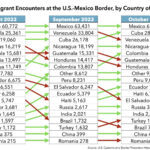Mexican Loteria is more than just a game; it’s a vibrant expression of Mexican culture, history, and artistry. For generations, this game of chance has captivated people of all ages, becoming a beloved pastime and a symbol of Mexican identity. Its colorful imagery and engaging gameplay have also inspired artists around the world, including myself during my time living in Mexico.
What is Mexican Loteria?
Often referred to as “Mexican bingo,” Loteria is a traditional game of chance played using a deck of cards with vibrant images instead of numbers. Its roots trace back to 15th-century Italy, eventually making its way to Spain and then Mexico in the 18th century. Initially enjoyed by the upper class, Loteria gained popularity among soldiers during the Mexican War of Independence as a form of entertainment, and later spread to the wider population, becoming a staple in Mexican homes and fairs. The game involves a caller announcing the name of a card, and players marking matching images on their “tabla” or game board. The first player to complete a predetermined pattern on their tabla shouts “¡Lotería!” to win.
The Artistry Behind the Cards
What truly sets Mexican Loteria apart is its captivating artwork. Each of the 54 cards features a unique image representing everyday objects, animals, professions, and iconic Mexican figures, rendered in a distinctive folk art style. These images are not just decorative; they often carry symbolic meanings and reflect aspects of Mexican life and folklore. The rich colors, bold lines, and whimsical characters have long served as a source of inspiration for artists seeking to capture the essence of Mexican culture.
My own fascination with Loteria began during my time in Mexico in 2000. While researching for my art installation paintings, I had the opportunity to interview the renowned Loteria company, Gallo. They generously shared their time and insights into the history and nuances of the game. During one of our meetings, I showed them some of my paintings and sketches inspired by Loteria imagery. To my delight, they were enthusiastic about my artistic interpretation and proposed a collaboration: to publish a “Nuevo Versión” (New Version) of their classic game using my artwork.
Creating the “Nuevo Versión”
Gallo’s vision was to refresh their century-old game, and I was thrilled to contribute to this exciting project. The “Nuevo Versión” Loteria was produced and distributed throughout Mexico and the US from 2001 to 2008. During the publishing process, Gallo offered a higher-quality printing option, but I opted to maintain the original printing style and affordability of the traditional game. My intention was to honor the historical context of Loteria as a game for the masses, accessible to everyone, just as it was when it first arrived in Mexico. The royalties I received from the “Nuevo Versión” were donated to the FAI Save the Children Foundation, Mexico, ensuring that the game’s success would also benefit Mexican children.
A Collector’s Piece
Unfortunately, like many businesses during the global economic recession of 2008, Gallo had to reduce production, and the “Nuevo Versión de Lotería” was discontinued. Today, the copyright for those “Nuevo Loteria” images has reverted back to me. For those who own this version, it has become a unique “collector’s item.” More importantly, I hope people continue to play and enjoy it, even as the cards show signs of wear, echoing my family’s well-loved Loteria set. Because, in the end, “the experience is better than the artifact.”
Mexican Loteria remains a powerful symbol of Mexican culture, a testament to its rich artistic heritage, and a source of joyful connection for people across generations. Whether you are drawn to its vibrant imagery, its engaging gameplay, or its cultural significance, discovering Mexican Loteria is an enriching experience.
